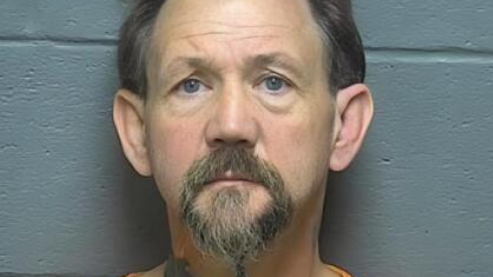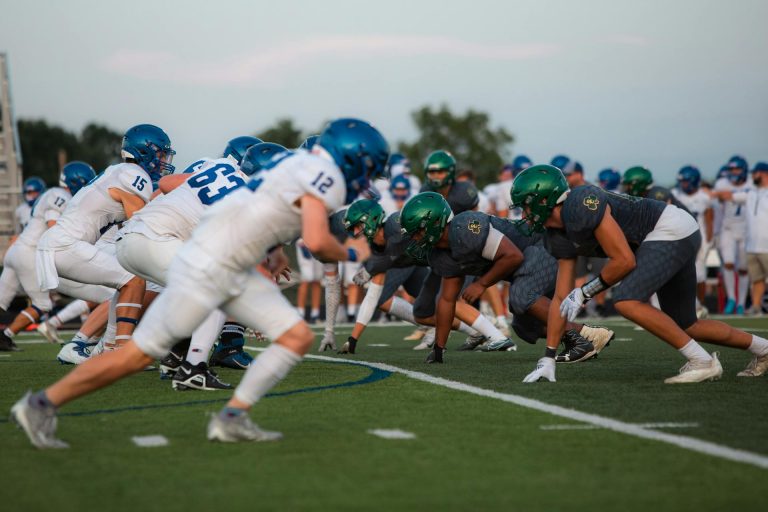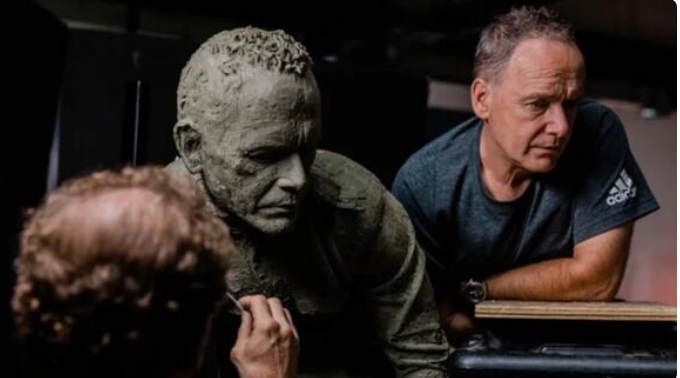
Sabin Howard sculpts the image of Joe Winslow, for "A Soldier’s Journey"
PAGE COUNTY, Va. – The likeness of a local combat veteran is featured in a World War I Memorial statue the Smithsonian calls “the greatest memorial bronze of the modern age.”
The memorial, “A Soldier’s Journey,” was a 10-year-effort by sculptor Sabin Howard. Its creation began in 2019 after the World War I Centennial Commission was authorized by Congress to erect it at a cost of about $44 million dollars.
Thirty-eight separate figures, spread over approximately 58 feet of wall towards the western end of the Memorial Core, portray the experience of one American soldier.
Memorial architect Joe Weishaar calls it “The Everyman.”
The likeness of Luray’s Joe Winslow is featured in the portion of the composition labeled by Howard as the “pieta.” Winslow is depicted as the Chaplain, and is lifting a fallen soldier off the ground with the help of another soldier.
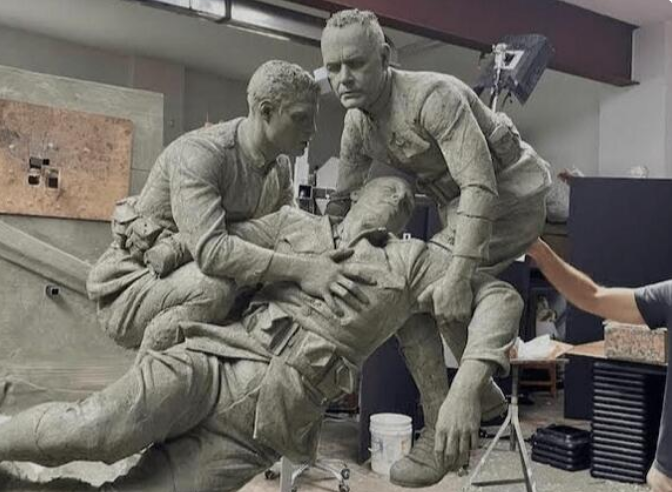
The pieta is meant to convey the combatants gathering one another, caring for the wounded and fearful, and helping them move forward. This message especially resonated with Winslow who has always felt as though his calling as a Marine officer was strengthened by a duty to gather together young Marines around him and help them move forward, both professionally and personally.
Winslow was asked by the sculptor to be a part of the project after he shared that he participated in combat operations as a Field Historian and Combat Artist where he accompanied infantry assault units to record their operations for the National Museum of the Marine Corps. He described his role as “having a rifle in one hand and a sketch pad in the other.” Winslow is one of only six living veterans depicted in the composition.
“Sabin and [his wife] Traci both immediately understood that I had lived through a lot of the scenes and emotions conveyed in the memorial,” said Winslow in an emailed statement. “They felt like my experiences, temperament and expressions would add to the visual story.”
According to the National Park Service website describing the memorial:
Starting from the left, the soldier takes leave from his wife and daughter, charges into combat, sees men around him killed, wounded, and gassed, and recovers from the shock to come home to his family. The figures are mounted on the wall.
In the departure, the soldier’s daughter hand him his helmet, while his wife touches him with a restraining arm, as if to hold him back as he answers the call to battle – representing the debate over American involvement in the war. In the initiation, the soldier joins the parade to war, as the United States joins the epic battle in Europe.
The parade, and the work as a whole, includes African Americans and other ethnic groups who answered their country’s call.
In the middle scene, the ordeal, the parade devolves into the tension before the charge and then the tumult of desperate and violent combat. At the center our hero calls his comrades into battle, illustrating the famous American battle cry from Belleau Wood: “Come on, you sons of bitches, do you want to live forever?”
The aftermath depicts the physical and mental wounds of the fighters. Here are represented American women who served at home and on the fighting front. And here the turbulent, left-to-right narrative pauses, as the hero stops and looks directly at the viewer. The soldier’s look of shock and loss – the thousand-yard stare – along with the empty helmets piled at his feet, invite the viewer to stop and contemplate with him the costs of war.
In the return, the soldier rejoins the homecoming parade. One figure looks back with pride, while a flag bearer leads the country forward into “the American century.” Our soldier returns home and hands his helmet back to his daughter. She looks into the helmet and sees World War II, the war that will bring America back to Europe little more than 20 years later.
“America’s young men and young women are up to the task of defending our country as much as they were during WWII, Viet Nam and Korea, and that when we call upon these young people who become Marines, they respond because they believe in our country.,” said Winslow. “They believe in what they are doing, and they are going to do whatever it takes—up to and including giving their lives—to defend what we have here. They make that choice willingly, and they are very capable of doing it.”
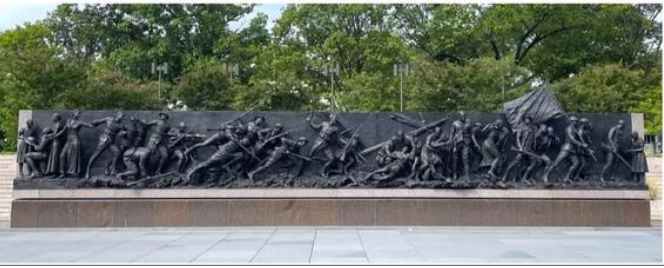
“A Soldier’s Journey” was unveiled at the National World War I Memorial in Washington, DC on September 13th, 2024. Since then, it has been featured in countless national news stories and publications.
“I’m deeply honored they asked me to participate,” said Winslow, “and am using this to represent other veterans who have given so much more.”

